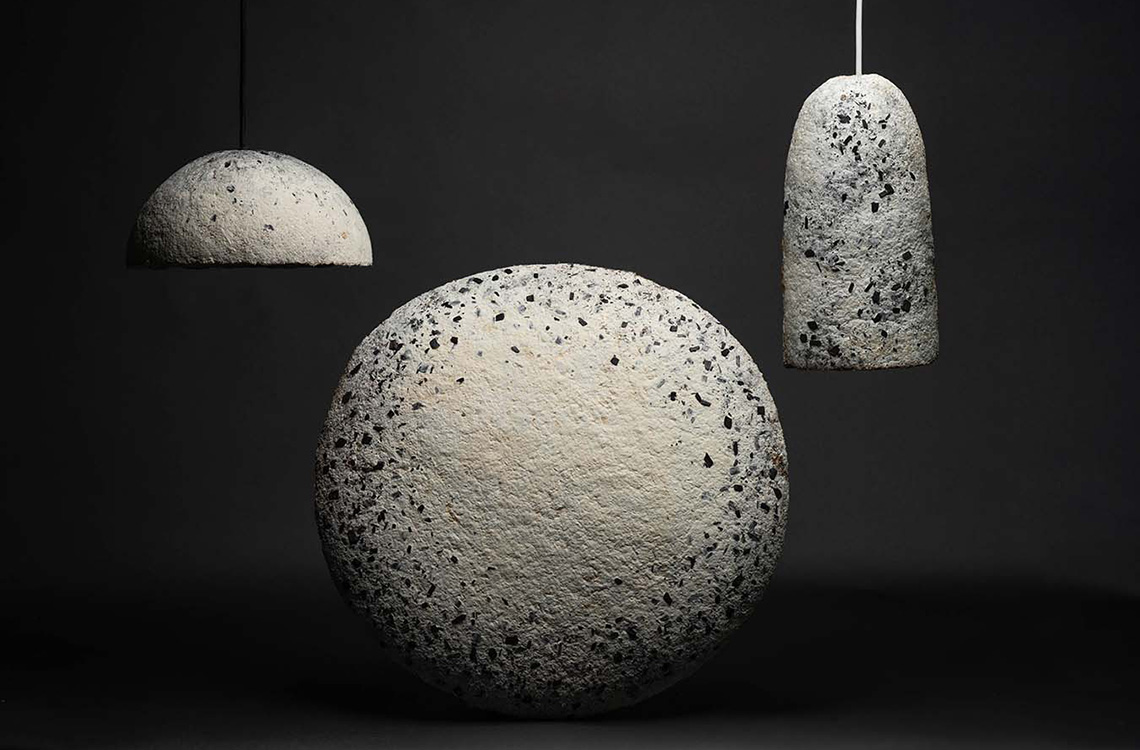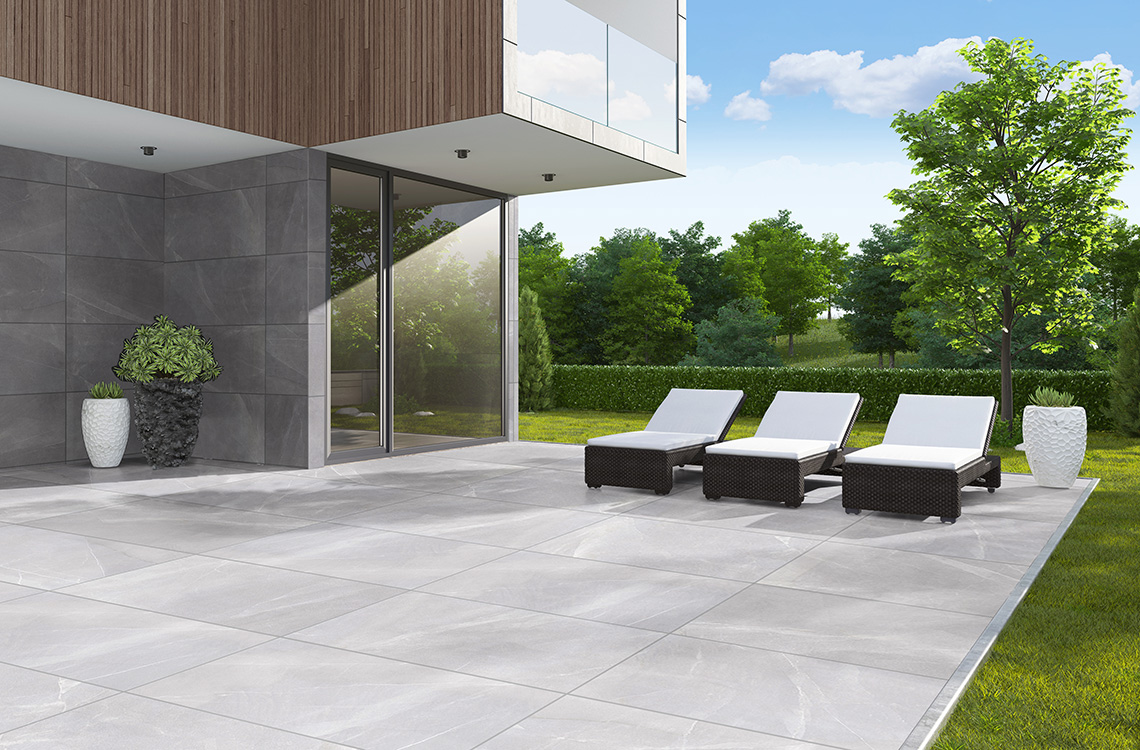TREND TALK 2024. #2 INNOVATIVE MATERIALS
Sustainability is front and centre in any conversation in the architectural field, the construction world and the design-for-living space. Actually, it’s a package deal wrapped up with comfort and innovation. Innovative Materials are in the fast lane, developing at speed and creating excitement. Quite apart from the green elements we’ve already come to expect – recycled items, upcycled things, reclaimed wood and metal, repurposed textiles and so on, all of which reduce our environmental impact and add character, individuality and story to a space – the latest rise of utterly unexpected materials is thrilling. And Mother Earth is standing in the aisles applauding.
As designers experiment with innovative materials, we’re seeing great adventures in the small-scale manufacture of unique items made from highly renewable natural resources. But, the most unlikely and surprising sources. Like seaweed. And mushrooms.
Light from seaweed. What if we told you there are unique pieces like seaweed lamps out there? Avant-garde design studios are experimenting with dark green algae called Chlorophyta. This is a special kind of seaweed that is translucent and filters sunlight, which creates a glow during the day. Sheets of this marine miracle are wrapped around a framework and then left to dry. Each forms a unique sculptural form in the drying process. That remarkable translucency lives on in the hardened marine material, which glows in patches when a warm LED bulb is inserted into the framework. Wonky, uneven, organic, spellbinding. No two seaweed lamps are alike.
{https://www.dezeen.com/2019/09/08/nea-studio-lamp-dried-algae/}

Is there fungus in your furniture? Stick around... there may very well be, in the not too distant future. Thanks to the fibrous quality of mycelium, which is what mushrooms are made of, designers are experimenting with the soft, velvety, slightly leathery quality of this new mycelium material. 100% biodegradable. And depending upon what the mushrooms have been noshing on, your mycelium material will have different textures and colours. You may well be swopping your leather jacket for a mushroom-based one. Other surfaces will also benefit from this super-sustainable substrate ... ones that traditionally get clad in materials like wood.
{https://www.forbes.com/sites/lesliekatz/2023/10/10/this-furniture-is-made-of-fungi/?sh=850890f797c6}
Seaweed as a building block. In Mexico, right now, structures are being erected, made from seaweed and seagrass bricks. In particular, a highly invasive unwanted seaweed called Sargassum. Millions of tons of this unwanted seagrass have been washing up on North American beaches and rotting. Some smart farmers have been using it as fertiliser. But now it’s being put to good use in the building industry. (Perhaps our local bight minds could do something similar with our invasive water hyacinth? #just saying)
Japan’s been doing something similar, with a substance called Shikkui, a lime-based plaster that contains a ‘glue’ of seaweed extracts. Naturally, fire retardant, anti-bacterial, durable and non-toxic. Meanwhile, Denmark has been using seagrass as a thatching material. So has China. And the Netherlands, too, thanks to a sustainable company called Seabrick. It’s safe to say this is a trend that is getting traction. Expect a flood of innovative building materials this year.
Now it may seem like a far cry from seaweed bricks and edible cutlery (yes, it’s a thing), but there’s some seriously sustainable innovation at play in your nearest Italtile showroom, thanks to our pioneering partners. Much of it is happening right here in the R of SA. Let’s give you a couple of exemplars:
Kronos Grey INOUT Glazed EcoTec Porcelain Tile 600 x 1200. This glorious new-generation glazed porcelain tile is an imaginative stone-look tile, but its beauty is more than skin deep; it offers a host of innovative and sustainable features and benefits. Let’s start with the makery – our partners Gryphon of Ceramic Industries – who have spearheaded the development of thinner, stronger tiles in South Africa with their unique EcoTec technology. These are tiles that use less clay, less firing time, less water and less fuel in transport.

Next, let’s interrogate the slip-resistant technology. Ceramic Industries has developed their own take on the internationally recognised INOUT surface technology. This is a revolutionary concept that marries a smooth feel when dry, with exceptional grip in the wet. The interesting thing here is that traditional slip-resistant tiles offer an uncomfortably grainy surface, so the Kronos surface is a remarkable departure from the norm. That’s because the Kronos tile surface is created from a very fine granular coating of uniformly sized nanoparticles. Hence the velvety texture. It’s a smooth surface that is also extremely easy to wipe clean. Oh, and one more thing. The cushion edge format is designed to minimise the joins and grout lines, for a near seamless final look when laid.
100% recycled glass mosaics. Our exquisite LiveGreen glass mosaic sheets deserve a shout out here. So many to highlight, but for now, let’s give our new Caribbean Forest Recycled Glass Inkjet Mosaic Sheets the spotlight. A profusion of multi-coloured botanical motifs on the surface, thanks to smart inkjet printing technology but underneath, a heart of solid recycled glass. Enviroglass, our Global Stone partners call it. Designed to reduce landfill. Used glass is collected, cleaned, crushed, melted down and repurposed. Shapes are machine-pressed out of the molten glass. As a result of this high temperature firing, the glass becomes very durable, and through the process the colour is full bodied. It’s a story with a happy ending: once the mosaics reach the end of their lives in your home, they can once again be recycled.

Oh, and those edible spoons? We weren’t joking. If you’re a Shark Tank aficionado you’ll know all about IncrEdible Eats, who sampled their vanilla and chocolate flavoured spoons at ice cream parlours. Have your local ice cream people got edible spoons? Or do they still use landfill-clogging, turtle-killing plasticware? It’s in your hands. Raise your voice, ask for edible cutlery and let’s get those plant-based options out there.
Let’s turn the trend of Innovative Materials into a movement.
Live Beautifully!
Ciao.














































































































































































































































































Validate your login